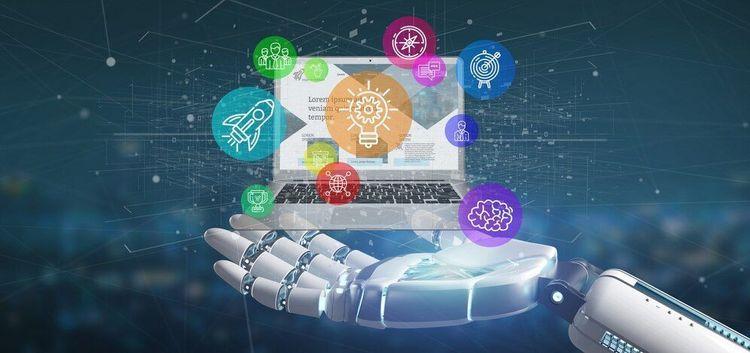How 5G Technology Is Revolutionizing Online Learning: Enhanced Connectivity and Engagement
the fusion of 5G technology with online learning is ushering in a new era of digital education. With lightning-fast speeds, ultra-reliable connections, and reduced latency, 5G is rapidly transforming the educational landscape. Whether you’re a student,teacher,administrator,or education technologist,understanding the profound impact of 5G on e-learning is essential for thriving in the smart classroom era. In this comprehensive guide, we’ll explore how 5G technology is revolutionizing online learning, fostering enhanced connectivity, and unlocking new levels of student engagement.
Understanding 5G Technology: Beyond Just Speed
At its core, 5G technology represents the fifth generation of wireless networks, succeeding 4G/LTE. But it’s not just about blazing-fast download speeds. The true power of 5G lies in its ability to offer:
- Ultra-low latency (as low as 1 millisecond)
- Massive bandwidth—supporting hundreds of devices in a single area
- Consistent and reliable connectivity
- Improved network slicing for customized educational applications
5G’s technical advancements directly address many long-standing challenges in distance education and remote learning, making it a game-changer for learners across the globe.
Ways 5G Is Transforming Online Learning Environments
Let’s break down how 5G-enabled online learning is redefining digital education:
1. Enhanced Live Streaming & Real-Time Collaboration
- Seamless Video Classes: 5G reduces buffering and lag, ensuring uninterrupted HD or even 4K live lectures. Students can participate from anywhere, even on mobile devices, without sacrificing quality.
- Interactive Sessions: Real-time quizzes, polls, and break-out rooms become more responsive, fostering higher engagement during live sessions.
- Virtual Classrooms: Teachers and students can work together synchronously, sharing screens, resources, and feedback instantly.
2. Powering Immersive Learning with AR/VR
- Augmented & virtual Reality: 5G’s high speed and reduced latency enable complex AR and VR experiences via the cloud. Imagine virtual field trips to historic landmarks or interactive science labs coming to life in students’ homes.
- Simulations & Gamification: Engaging simulations and educational games can stream directly to students’ devices,making learning hands-on and memorable.
3. Expanding Access via IoT Integration
- Smart Learning Devices: Connected devices—tablets, wearables, sensors—can deliver personalized learning, track progress, and even support special needs students.
- Remote assessments: Teachers can monitor participation, engagement, and comprehension in real-time, improving feedback and support.
4. Bridging the digital Divide
For rural or underserved communities, 5G networks offer affordable, high-speed internet access where customary infrastructure is lacking. This narrows the educational inequality gap and ensures no learner is left behind.
Key Benefits of 5G-Powered Online Learning
- Consistent Connectivity: Less downtime and more reliable access means students never miss a lesson.
- Scalability: 5G can support massive online open courses (MOOCs) with thousands of participants worldwide without bottlenecking.
- Personalization: AI-driven recommendations and adaptive learning platforms become smarter with real-time, data-rich connections.
- inclusivity: Learners with disabilities can benefit from low-latency voice assistants, video captions, and accessibility tools.
Real-World Case Studies: 5G in Education
Several pioneering institutions and ed-tech companies are already harnessing the power of 5G to create unmatched learning experiences:
- South Korea’s 5G Smart Schools: In partnership with telecom operators, schools in South Korea are using 5G to offer real-time, interactive virtual classrooms and language exchange programs.
- Arizona State University’s VR Labs: Leveraging 5G, ASU delivers virtual science labs to online students, increasing engagement and hands-on science learning from a distance.
- 5G-Powered Learning Buses in the UK: Mobile buses equipped with 5G WiFi travel to remote villages, bringing digital resources and STEM activities to students without reliable home internet.
Practical Tips to Maximize 5G for Online Learning
- Upgrade Devices: Ensure laptops, tablets, and smartphones support 5G connectivity for optimal performance.
- Utilize Cloud-Based EdTech Platforms: Leverage modern Learning Management Systems (LMS) and collaboration tools optimized for high-speed connections.
- Explore AR/VR content: Incorporate immersive educational resources that only 5G can support effectively.
- Prioritize Security: Use trusted platforms and strong authentication to protect student data on 5G networks.
Challenges and Considerations
While the benefits of 5G in education are enormous,challenges remain:
- Device Compatibility: Not all students or schools can afford 5G-ready devices initially.
- Network Rollout: 5G coverage remains limited in certain regions,requiring ongoing investment and support.
- Data Privacy: Increased connectivity means more data—institutional safeguards must keep pace to protect students.
The Future of Online Learning with 5G
The potential of 5G in revolutionizing online learning is only just beginning. As networks mature and coverage expands, we can expect:
- Unprecedented interactivity through real-time language translation and AI-powered tutoring.
- Global classrooms where students collaborate across continents as if sitting side by side.
- Personalized, adaptive learning journeys for every individual, powered by the data-driven insights only 5G can deliver.
- Satellite-based 5G to connect even the most remote and disadvantaged learners across the world.
Conclusion: Embracing the 5G educational Revolution
5G technology is set to revolutionize online learning by delivering faster, more reliable, and immersive educational experiences. From seamless streaming to realistic virtual environments and broader access, the possibilities are boundless. As students, educators, and institutions embrace 5G-enabled education, the future of learning is shining, inclusive, and truly global.
Start preparing today for the 5G-powered classroom of tomorrow—as when education meets cutting-edge technology, transformative learning happens.

